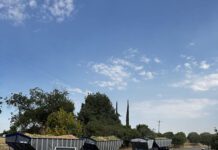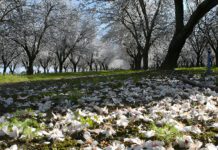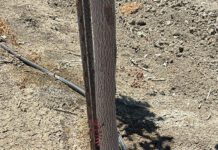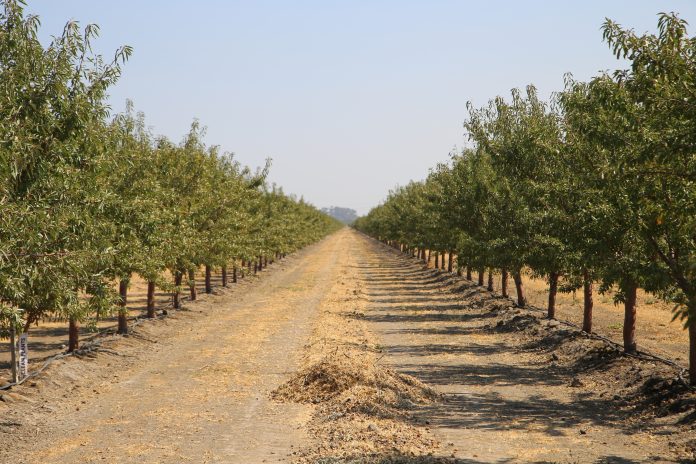
It’s that time of the year, when I start posting my concern to my growers to get their postharvest nutrition as dialed in after harvest as possible. So, guess what this article is posting about. Get it done. Imagine you just ran hard for six months. You fed yourself every ounce of carbohydrates you could consume to grow leaves, make fruit and create new growth for next year’s buds. You have one opportunity to store carbohydrates for winter. That time is from the day those trees stop taking care of this year’s crop and the nuts come off. Now that we are in October, I hope the feed part of giving your trees what they need to do just that is well underway.
Huge Slugs Won’t Cut It
For years, growers thought of postharvest as a good slug of nitrogen and soil amendments. But often there are detriments to that approach. One would be applying much more than the trees can take up in a week or two. We’ve talked in the past of your trees being able to take up about 10 units N per week. If you use 70% as the efficiency factor, you’d be applying 14 units to get that 10. So, let’s break down a typical 10-gallon application of UAN-32. UAN-32 weighs 11.06 pounds per gallon, so 10 gallons is going to be just shy of 111 pounds. Multiply that by 32% and you get over 35 units N in that application. That’s two and a half weeks’ worth of nitrogen if the trees take up all 70% of what’s applied.
Now taking into account long sets that push water to two or three feet in the soil profile.
If you push the nitrate, the leachable portion of that N through the roots before it can be absorbed, you didn’t get 70% efficiency. Now let’s think about the ammoniacal and urea portion of the “U.A.N.” Some ammoniacal N can be absorbed, but that is limited. The rest of the urea and amine form has to oxidize to convert to nitrite and then nitrate to be absorbed. That’s a biological process. When it’s warm in the summer and early fall, as this happens and we turn the water back on, we are pushing that leachable N further through the profile in the next set. If the soil is staying wet for long periods of time, we are knocking back our biology with anaerobic conditions, further slowing down the process. Less efficiency. And with N (basically all fertilizer as well) prices these days, we need all the efficiency we can get.
Consider the Biology
Now throw phosphorus into the mix. Our trees take up P in the orthophosphate form. Many of our fertilizers have P in the polyphosphate form. Here’s some good news: when it’s warm, the conversion can happen quickly (in days, not weeks) if the soil isn’t too wet for too long. We need biology to make P more efficient. If we knock back the biology with long periods of wet soil conditions, that will be less efficient as well. Now let’s throw potassium into the mix. K is a smaller element with a single charge. It leaches very quickly. Here we go again, pushing more expensive nutrition past the active feeder root zone. The majority of all things nutrition happens in the top eight inches of soil. That’s where the biology happens to be most active. All those tiny white root hairs that try to create that mesh of straws exchanging nutrients are in the top of the soil profile.
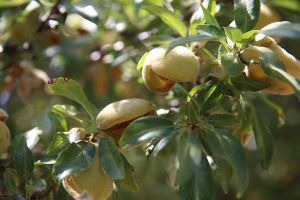
Strategic Approach
So, let’s get to the finish line. Get those trees rehydrated with a good slug of water immediately after the last nut leaves the field. Then let’s create a smaller shot approach both with our water and our nutrition. If you have run some soil CO2 tests to see how much biology is actually still active in your soil and it’s low, add some active biological inoculants to your fertilizer program.
Instead of a 48-hour set, humor me and run (five) eight-hour sets for five nights in a row. You will save eight hours off your power bill, 40 hours of savings being off peak, and water your trees at night when they recover and experience far less evaporation. Win, win, win. Now break up your fertigation of those nutrients with injections on nights one, three and five. Watch how quickly those trees respond to a more strategic approach. Take some October tissue samples and see what is being taken up. Compare that to your July or August samples and see how they’ve changed.
Now make a plan to level off the rest of the deficient nutrients in the next weeks irrigation in those smaller shots. It will make it easier to catch up a bit in this critical time of need. This is the only time your trees can produce and store carbohydrates in the root zone that aren’t all going to making fruit and more tree mass. This is your winter feed that fuels recovery and production in the spring. If you’re behind on your postharvest plan, huge slugs aren’t going to cut it and you’ll most likely be wasting money. Getting it right will allow you to post bigger numbers in your bank deposits.







